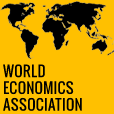Unraveling the Macroeconomic Factors Affecting Economic Growth in AANZFTA Countries
Keywords:
Economic growth, Macroeconomic Indicators, Regression Analysis, New ZealandAbstract
Economic growth is a crucial indicator of a nation’s development, and it is influenced by multiple macroeconomic factors. This study examines the macroeconomic factors affecting economic growth in the AANZFTA member countries covering the period from 1970 to 2022 with a sample set that comprises a total of 371 observations. The primary objective is to assess the significance and direction of the effects of exports of goods and services (EXP), gross capital formation (GCF), general government final consumption expenditure (GFE), and inflation consumer prices (INF) on GDP growth. The novelty of this research lies in its inclusion of both developed and developing economies within a unified regional trade bloc of AANZFTA, specifically encompassing the ASEAN countries and the Oceania economies of Australia and New Zealand, a dimension that has not been widely examined in this context. This study adopts a quantitative research approach using secondary data sourced from the World Development Indicators (WDI). Panel regression analysis was conducted using Eviews 10 software, with model diagnostic such as the Hausman test employed to determine the most appropriate model. The results from the random effects model reveal that EXP, and GFE have positive and significant impact on GDP growth. GCF also shows a positive but insignificant effect, while, INF negatively and significantly affects GDP growth. These findings suggest that policies aimed at enhancing exports, increasing government spending on productive sectors, and managing inflation are crucial for fostering sustainable economic growth in the AANZFTA member countries. This study provides valuable policy implications for both developed and developing member states. Further research should consider expanding the country sample and incorporating macroeconomic variables to deepen the understanding of growth dynamics in the region.
Downloads
References
Abdulkadr, A.A. et al. (2024) ‘Analyzing the dynamics of monetary policy and economic growth in Ethiopia: an autoregressive distributed lag (ARDL) approach’, Discover Sustainability, 5(1). Available at: https://doi.org/10.1007/s43621-024-00271-w.
Acikgoz, B. and Cinar, S. (2017) ‘Public spending and economic growth: An empirical analysis of developed countries’, Ekonomicky casopis, 65(5), pp. 448–458.
Affairs, I. (2015) ‘The New Zealand – ASEAN trade partnership : 40 years of development’, 40(4), pp. 28–31.
Akobeng, E. (2017) ‘Gross Capital Formation, Institutions and Poverty in Sub-Saharan Africa’, Journal of Economic Policy Reform, 20(2), pp. 136–164. Available at: https://doi.org/10.1080/17487870.2015.1128833.
Amjed, S. and Shah, I.A. (2021) ‘Does financial system development, capital formation and economic growth induces trade diversification?’, Journal of Economics and Development, 23(3), pp. 222–237. Available at: https://doi.org/10.1108/JED-06-2020-0073.
Arapova, E. (2018) ‘Determinants of household final consumption expenditures in asian countries: A panel model, 1991-2015’, Applied Econometrics and International Development, 18(1), pp. 121–140.
Armstrong, S. (2019) ‘Role of Australia and New Zealand in Strengthened ASEAN Centrality and East Asia Collective Leadership’, (May), pp. 103–106.








